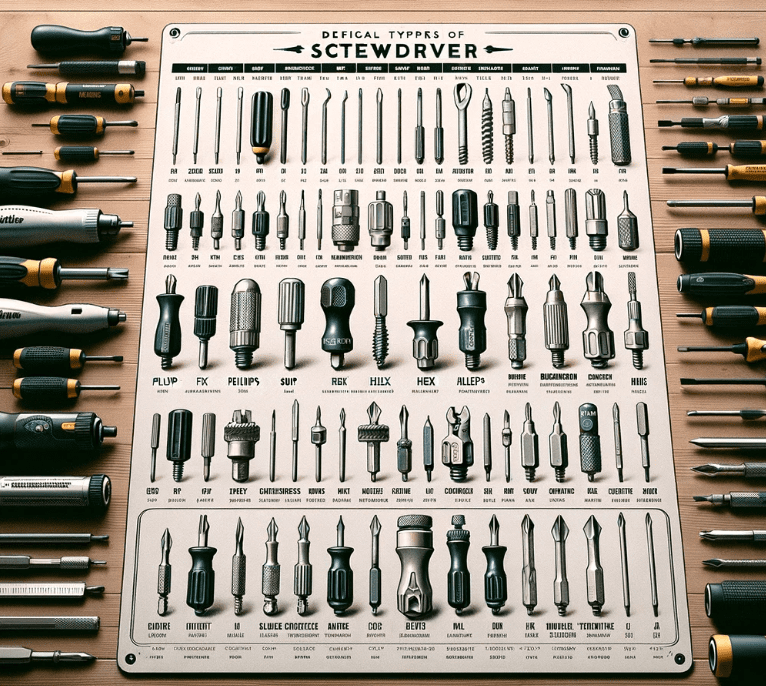
Guide to Screwdrivers: Master the Art of Turning with the Right Tool
Screwdrivers are those seemingly simple tools we often take for granted. But within their unassuming forms lies a universe of shapes, sizes, and purposes, each key to unlocking different screw mysteries. This guide will equip you to navigate this world, making you a confident screwdriver master!
Flathead Screwdriver
- Small: used for precision work on electronics or small appliances
- Medium: used for general household tasks
- Large: used for heavy-duty work
When choosing a flat-head screwdriver, it is important to make sure that the tip of the screwdriver is the same size as the slot in the screw head. If the tip is too small, it will not grip the screw properly and could damage the screw or the screwdriver. If the tip is too large, it will not fit into the slot at all.
Here are some tips for using a flat-head screwdriver:
- Make sure the tip of the screwdriver is the correct size for the screw head.
- Place the tip of the screwdriver firmly in the slot of the screw head.
- Apply pressure to the handle and turn the screwdriver in the direction you want the screw to go.
- Be careful not to apply too much pressure, as this could damage the screw or the screwdriver.
- If the screw is stuck, you can try tapping the handle of the screwdriver gently with a hammer to loosen it.
Phillips Screwdriver
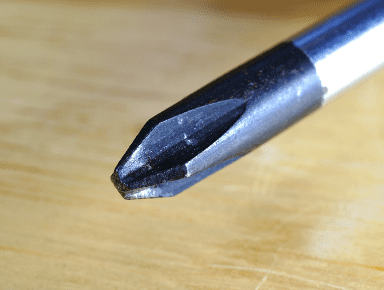
A Phillips screwdriver, also known as a cross-head screwdriver, is a common hand tool used to turn screws with a cross-shaped indentation in their heads. Compared to flat-head screwdrivers, they offer better grip and reduce the chance of slipping and damaging the screw head.
Sizes and Types:
Phillips screwdrivers come in a variety of sizes, typically denoted by numbers from #0 to #4, with #0 being the smallest and #4 being the largest. It’s crucial to choose the right size screwdriver for the screw you’re working with, as using the wrong size can damage both the screw and the tool.
They also come in various types, including:
- Standard: The most common type, with a straight shaft and a pointed tip.
- Stubby: Have a shorter shaft for working in tight spaces.
- Magnetic: The tip is magnetized to hold screws in place, making it easier to start them.
- Ratcheting: Allows you to turn the screw without lifting the screwdriver, making them ideal for repetitive tasks.
Here are some links to Amazon products for different types of Phillips screwdrivers:
- Standard Phillips Screwdriver: CRAFTSMAN Phillips Screwdriver, PH #2, 4-Inch:
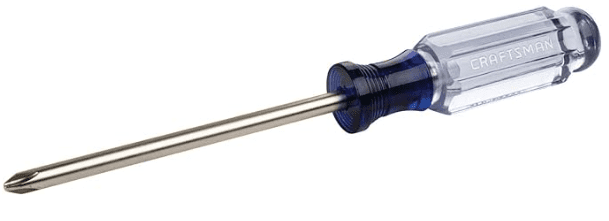
- Stubby Phillips Screwdriver: Neiko 6-Piece Stubby Screwdriver Set – Phillips and Slotted:

- Magnetic Phillips Screwdriver: TEKTON 20524 2-in-1 Magnetic Screwdriver Set, Phillips #1 & #2
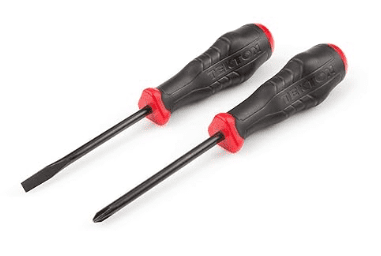
- Ratcheting Phillips Screwdriver: Klein Tools 32305 Multi-bit Ratcheting Screwdriver
, Phillips
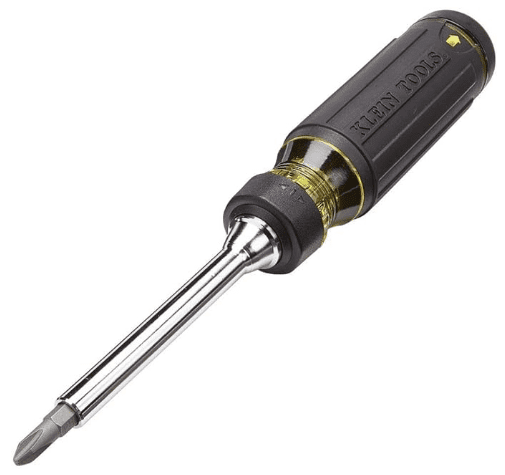
Additional Tips
- When choosing a Phillips screwdriver, consider the quality of the steel and the handle grip.
- For added convenience, consider getting a screwdriver set that includes multiple sizes and types.
- Always wear safety glasses when using any hand tools.
Torx Screwdriver
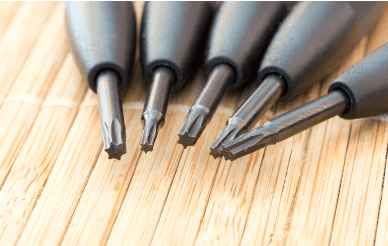
The Torx screwdriver’s star-shaped tip is engineered for high torque transmission without slippage, making it ideal for automotive and electronic device applications. Its design allows for greater contact with the screw, reducing wear on the tool. However, it’s less commonly found in household toolkits due to its specialized nature. An image would highlight the Torx tip’s unique geometry, which provides a superior grip on Torx screws.
Hex Screwdriver
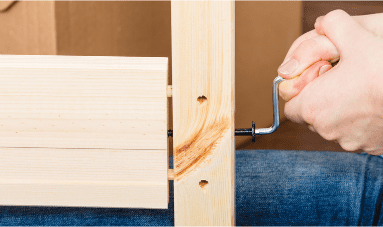
Often overshadowed by their flathead and Phillips counterparts, hex screwdrivers are essential tools for various tasks, from furniture assembly to bike repairs and beyond. Their simple design and secure grip make them reliable for many applications.
What are they?
Hex screwdrivers, also known as Allen wrenches, feature a hexagonal-shaped tip that fits into screws with a corresponding hexagonal socket. This design provides a tighter fit compared to flathead screwdrivers, reducing the risk of slipping and damaging the screw head.
Types of Hex Screwdrivers
Hex screwdrivers come in various forms to suit different needs:
- Standard hex screwdrivers: These L-shaped tools come in individual sizes or sets with various sizes.
- Hex keys: These T-shaped tools offer better leverage for tighter spaces.
- Hex bit sets: These sets include interchangeable hex bits that fit into a screwdriver handle, providing versatility for various screw sizes.
- Ratcheting hex screwdrivers: These allow for continuous turning without lifting the tool, ideal for repetitive tasks.
Choosing the Right Hex Screwdriver
Selecting the correct hex screwdriver is crucial for efficient and damage-free work. Here are some key factors to consider:
- Screw size: Match the size of the hex screwdriver tip to the screw head exactly. Using an incorrect size can strip the screw or damage the tool.
- Application: Standard hex screwdrivers work well for general tasks, while hex keys offer better leverage in tight spaces. Bit sets provide flexibility for various screw sizes.
- Material and quality: Opt for screwdrivers made from durable steel for long-lasting performance and comfortable grips for better control.
Tips for Using Hex Screwdrivers
- Apply steady pressure: Avoid excessive force, as it can damage the screw or tool.
- Turn smoothly: Don’t jerk the screwdriver, as this can also cause damage.
- Use the right tool: Always match the screwdriver size to the screw head.
- Keep them organized: Store your screwdrivers in a designated place to avoid losing them.
With their versatility and secure grip, hex screwdrivers are valuable assets in any toolbox.
Robertson Screwdriver
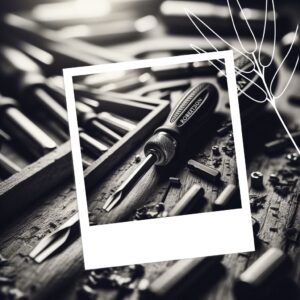
While Phillips screwdrivers reign supreme in many households, Robertson screwdrivers, also known as square screwdrivers, offer a compelling alternative. Their unique design promises a sturdier grip, less cam-out (slipping), and overall ease of use, making them popular choices in various industries and DIY projects.
The defining feature of a Robertson screwdriver is its square-shaped tip that fits a corresponding square socket in the screw head. This design provides several advantages:
- Superior Grip: The square interface prevents cam-out, the frustrating slippage common with Phillips screwdrivers, allowing for better control and torque transmission.
- Reduced Damage: The secure fit minimizes the risk of damaging the screw head, especially compared to flathead screwdrivers.
- User-Friendly: The square design is intuitive to use and requires less pressure, making it easier on your hands.
Types of Robertson Screwdrivers
Similar to other screwdrivers, Robertson screwdrivers come in various forms:
- Standard Screwdrivers: L-shaped tools available individually or in sets with different sizes.
- Stubby Screwdrivers: Shorter versions ideal for tight spaces.
- Ratcheting Screwdrivers: Allow for continuous turning without lifting the tool, perfect for repetitive tasks.
- Bit Sets: Offer interchangeable bits for various screw sizes and fit into a screwdriver handle.
Choosing the Right One
Selecting the appropriate Robertson screwdriver is crucial to reap its benefits:
- Size Matters: Match the tip size to the screw head perfectly. Incorrect size can strip the screw or damage the tool.
- Consider the Task: Standard screwdrivers work well generally, while stubby versions excel in tight spaces. Bit sets provide flexibility.
- Quality Counts: Invest in screwdrivers made from durable steel for longevity and comfortable grips for better control.
Tips for Using Robertson Screwdrivers
- Steady Pressure: Avoid excessive force, which can damage the screw or tool.
- Smooth Turns: Don’t jerk the screwdriver, as this can also cause damage.
- Right Tool, Right Screw: Always match the screwdriver size to the screw head.
- Keep them Organized: Store your screwdrivers properly to avoid losing them.
Embrace the Square Advantage
With their secure grip, ease of use, and reduced damage potential, Robertson screwdrivers deserve a place in your toolbox. Whether you’re tackling furniture assembly, electronics repairs, or other projects, consider giving them a try. You might be surprised by the “square deal” they offer!
Offset Screwdriver
Imagine an L-shaped screwdriver, but instead of a straight shaft, the tip is bent at an angle (usually 90 degrees). This unique design allows you to:
- Access hard-to-reach screws: Navigate obstacles like pipes, beams, or tight spaces where a straight screwdriver wouldn’t fit.
- Apply torque comfortably: The offset handle provides better leverage and reduces strain on your wrist, especially when working overhead or in confined areas.
- Increase precision: The angled tip offers improved visibility and control when turning screws in tight spots.
Types of Offset Screwdrivers
Not all offset screwdrivers are created equal. Here are some common variations:
- Standard offset screwdrivers: L-shaped with various tip options (flathead, Phillips, Robertson) and sizes.
- Stubby offset screwdrivers: Shorter length for even tighter spaces.
- Ratcheting offset screwdrivers: Allow for continuous turning without lifting the tool, ideal for repetitive tasks.
- Interchangeable bit sets: Combine the convenience of an offset handle with various bit options for broader screw types.
Choosing the Right Offset Screwdriver
To make the most of your offset hero:
- Match the tip: Ensure the tip type (flathead, Phillips, Robertson) and size match the screw perfectly.
- Consider the angle: Some screwdrivers offer different bend angles (like 45 degrees) for specific needs.
- Handle comfort: Choose a handle that fits your hand well and provides a good grip.
- Quality matters: Invest in durable steel construction and comfortable grips for long-lasting performance.
Using Offset Screwdrivers Effectively
- Apply moderate pressure: Avoid over-torquing, as the angled design can put more stress on the screw.
- Use smooth turns: Don’t jerk the screwdriver, as it can damage the screw or tool.
- Choose the right angle: Select the appropriate angle for optimal access and control.
- Keep them organized: Store your screwdrivers safely to avoid losing them.
Unlocking Hidden Screws
With their ability to reach around obstacles and offer better leverage, offset screwdrivers are valuable tools for tackling challenging screw placements. Add them to your toolbox and unlock a world of previously inaccessible screws, making your DIY projects smoother and more enjoyable!
Ratcheting Screwdriver

Imagine driving screws with lightning-fast efficiency and minimal effort. That’s the magic of ratcheting screwdrivers, tools that combine the power of screwdrivers with the convenience of a ratchet mechanism. Whether you’re a seasoned DIYer or a casual fixer-upper, these innovative tools can significantly boost your productivity and comfort.
Unlike standard screwdrivers, where you need to lift and reposition the tool for each turn, ratcheting screwdrivers feature a built-in mechanism that allows you to:
- Turn continuously: Simply push forward or pull back on the handle, and the ratchet mechanism rotates the bit, eliminating the need to lift and reposition.
- Increase speed: This continuous turning motion translates to significantly faster screw driving, saving you time and effort.
- Reduce fatigue: With less hand movement required, ratcheting screwdrivers minimize wrist strain and fatigue, especially during repetitive tasks.
Types of Ratcheting Screwdrivers
The world of ratcheting screwdrivers offers a variety of options to suit your needs:
- Standard ratcheting screwdrivers: L-shaped with single or interchangeable bits (flathead, Phillips, Robertson).
- Stubby ratcheting screwdrivers: Compact size for tight spaces.
- Multi-bit ratcheting screwdrivers: Combine a ratcheting handle with a set of interchangeable bits for diverse screw types.
- Palm ratcheting screwdrivers: Smaller, pistol-grip design for precise control in delicate tasks.
Choosing the Right Ratcheting Screwdriver
To select the perfect ratcheting partner:
- Match the bit: Ensure the bit type and size correspond to the screws you’ll be working with.
- Consider the handle: Choose a handle that fits your hand comfortably and provides a good grip.
- Ratchet direction: Some offer reversible ratcheting (forward and backward), while others only ratchet in one direction.
- Quality matters: Invest in a well-made screwdriver with a durable ratchet mechanism for long-lasting performance.
Tips for Using Ratcheting Screwdrivers
- Control the pressure: While efficient, avoid over-tightening screws, as the ratchet can increase torque easily.
- Maintain the angle: Keep the screwdriver straight in line with the screw head for better control and to avoid damaging the screw.
- Use with care: Don’t force the ratchet mechanism beyond its designed limits.
- Store them safely: Keep your ratcheting screwdrivers organized and protected to prevent damage.
Turning Up Your Toolbox
With their speed, comfort, and efficiency, ratcheting screwdrivers are valuable additions to any toolbox. Whether you’re tackling furniture assembly, electronics repairs, or various DIY projects, they can make your work significantly faster and easier. So grab a ratcheting screwdriver and experience the difference!
Precision Screwdriver
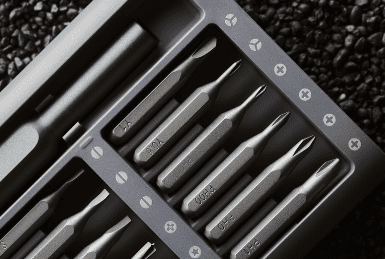
While their standard counterparts handle everyday tasks, precision screwdrivers delve into the delicate world of miniaturization. These tiny tools are essential for tackling intricate screws in electronics, eyeglasses, watches, and other precision devices. Their compact size and specialized tips ensure you don’t fumble with frustratingly small screws.
Tiny But Mighty
- Smaller handles: Designed for better grip and control in confined spaces.
- Narrow shafts: Allow access to tight clearances and deep recesses.
- Interchangeable bits: Cater to various screw types like flathead, Phillips, Torx, Robertson, and more.
- Magnetic tips: Help hold tiny screws in place for easier starting and manipulation.
Types of Precision Screwdrivers
The vast world of miniaturization demands diverse tools. Here are some common types:
- Standard sets: L-shaped handles with sets of interchangeable bits for various screw types and sizes.
- Mini screwdrivers: Even smaller versions for exceptionally tiny screws.
- Jewelers’ screwdrivers: Ultra-fine screwdrivers for delicate tasks like watch repair.
- Ratcheting precision screwdrivers: Offer continuous turning without lifting the tool, ideal for repetitive work.
Choosing the Right Precision Screwdriver
Selecting the perfect mini maestro depends on your needs:
- Match the bit: Ensure the bit type and size exactly correspond to the screws you’ll be working with.
- Consider the handle: Choose a handle size and grip that allow for comfortable and precise control.
- Set vs. individual: If you work with various screw types, a set with interchangeable bits offers flexibility.
- Quality matters: Invest in well-made screwdrivers with durable steel bits and comfortable handles for long-lasting performance.
Precision Tips for Using Precision Screwdrivers
- Apply gentle pressure: Avoid over-tightening, as delicate screws can easily strip or damage.
- Use the right angle: Keep the screwdriver straight in line with the screw head for better control.
- Magnetic advantage: Utilize the magnetic tips to hold tiny screws and prevent fumbling.
- Organize and store: Keep your screwdrivers organized and protected to prevent losing them or damaging the delicate tips.
Unlocking the World of Miniaturization
With their specialized design and diverse options, precision screwdrivers are essential tools for anyone working with miniature devices. Whether you’re a hobbyist, repair professional, or simply someone who needs to fix that tiny loose screw in your glasses, these mini marvels can save the day. So, equip yourself with the right precision screwdriver and confidently conquer the world of miniaturization!
Multi-Bit Screwdriver
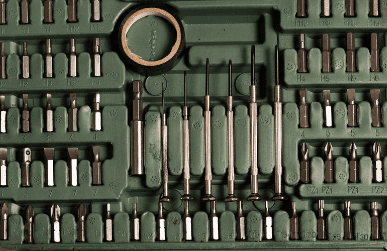
Imagine having a versatile tool that tackles various screw types without needing an entire arsenal of screwdrivers. That’s the magic of multi-bit screwdrivers, combining convenience and functionality in one handy package. Whether you’re a DIY enthusiast, a professional handyman, or just someone who needs to fix occasional loose screws, this tool becomes your go-to companion.
Versatility at Your Fingertips
Unlike their single-purpose counterparts, multi-bit screwdrivers offer:
- Interchangeable bits: A set of diverse bits (flathead, Phillips, Robertson, Torx, and more) stored within the handle or in a separate case.
- Compact design: Eliminates the need to carry multiple screwdrivers, saving space and weight in your toolbox.
- Convenience: Easily switch between bits based on the screw you’re working with, simplifying your tasks.
- Portability: Perfect for quick fixes around the house or on the go.
Types of Multi-Bit Screwdrivers
Multi-bit screwdrivers come in various forms to suit your needs:
- Standard sets: L-shaped handles with 3-10 interchangeable bits stored inside.
- Ratcheting sets: Combine the convenience of interchangeable bits with a ratcheting mechanism for fast turning.
- Stubby sets: Compact versions ideal for working in tight spaces.
- Professional sets: Offer a wider variety of bits and more durable construction for heavy-duty use.
Choosing the Right Multi-Bit Screwdriver
To select the perfect multi-bit companion:
- Consider the number of bits: Choose a set with enough bits to cover the screw types you encounter most often.
- Handle comfort: Select a handle that fits your hand well and provides a good grip.
- Ratcheting mechanism: Consider a ratcheting set if you need speed and efficiency.
- Quality matters: Invest in a well-made screwdriver with durable bits and a sturdy handle for long-lasting performance.
Tips for Using Multi-Bit Screwdrivers
- Choose the right bit: Ensure the bit type and size perfectly match the screw you’re working with.
- Secure the bit: Make sure the bit is tightly inserted into the handle to avoid slipping.
- Organize your bits: Keep track of your bits to avoid losing them, especially with larger sets.
- Store them safely: Keep your multi-bit screwdriver protected to prevent damage to the bits and handle.
Unleashing Versatility
With their compact size, diverse bit options, and convenient design, multi-bit screwdrivers are valuable additions to any toolbox. Whether you’re tackling everyday repairs or embarking on DIY projects, they offer the versatility and convenience you need to get the job done. So, ditch the bulky toolbox and embrace the multi-bit magic!
Electric Screwdriver
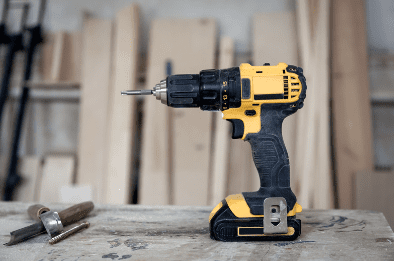
Tired of manually turning screws for seemingly endless tasks? Enter the electric screwdriver, a powerful tool that takes the effort out of driving screws, saving you time and energy. Whether you’re a seasoned DIYer tackling furniture assembly or a professional contractor working on extensive projects, these versatile tools can significantly boost your productivity and efficiency.
The Electrifying Difference
Compared to their manual counterparts, electric screwdrivers offer several advantages:
- Effortless turning: Powered by a motor, they eliminate the need for manual turning, reducing fatigue and strain on your hands and arms.
- Increased speed: Drive screws significantly faster, especially during repetitive tasks, saving you valuable time.
- Variable torque: Many models offer adjustable torque settings, allowing you to control how tightly you drive screws, preventing damage to delicate materials.
- Versatility: Many models come with interchangeable bits, enabling you to handle various screw types with one tool.
Types of Electric Screwdrivers
The diverse world of electric screwdrivers caters to various needs and preferences:
- Cordless screwdrivers: Battery-powered for portability and convenience, ideal for working away from outlets.
- Corded screwdrivers: Offer continuous power and are suitable for heavy-duty tasks or extended use.
- Impact drivers: Deliver high-torque pulses for tackling tough screws in dense materials like wood or concrete.
- Drill/driver combos: Combine drilling and screwdriving capabilities in one tool, offering increased versatility.
Choosing the Right Electric Screwdriver
Selecting the perfect electric partner depends on your specific needs:
- Power and torque: Consider the type of screws you’ll be driving and choose a model with sufficient power and torque.
- Battery life: For cordless models, consider battery capacity and charging time based on your expected usage.
- Features: Decide if you need variable torque, drill functionality, or other features.
- Comfort and grip: Choose a lightweight, well-balanced design with a comfortable grip for extended use.
Tips for Using Electric Screwdrivers
- Select the right bit: Ensure the bit type and size match the screw perfectly.
- Adjust the torque: Set the torque appropriate for the screw and material to avoid damage.
- Start slow: Begin driving the screw slowly to avoid stripping the head.
- Use safety glasses: Always wear safety glasses when using power tools.
- Maintain your tool: Clean and lubricate your screwdriver regularly for optimal performance.
Unlocking Efficiency
With their power, speed, and versatility, electric screwdrivers are valuable tools for anyone who wants to tackle screw-driving tasks efficiently and effortlessly. Whether you’re a DIY enthusiast or a professional, consider adding an electric screwdriver to your toolbox and experience the difference it can make!
Other Types of Screwdrivers
While the above types cover most screw-driving needs, there are specialty screwdrivers for almost every niche application.
For example:
-
Pozidriv Screwdriver
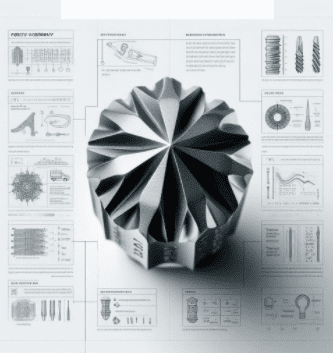
A Pozidriv screwdriver is a type of tool that can be used to tighten or loosen screws with a cross-shaped slot. The Pozidriv screwdriver has four additional ribs between the main blades, which provide a better fit and prevent the tool from slipping out of the screw head. Pozidriv screwdrivers are commonly used in woodworking, automotive, and electrical applications. They are available in different sizes and lengths, depending on the size of the screw and the depth of the hole. Pozidriv screwdrivers are designed to withstand higher torque than Phillips or slotted screwdrivers, and they are less likely to damage the screw or the surface.
-
Spanner Screwdriver
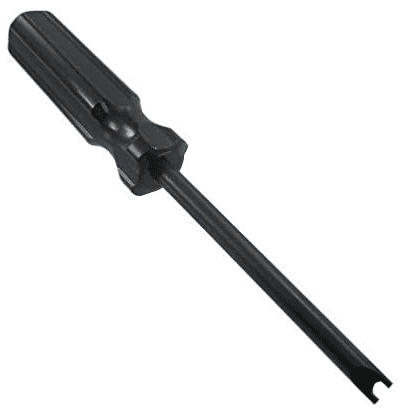
These screwdrivers are characterized by their U-shaped bit that fits around the head of the screw. They are commonly used for tamper-proof screws, which have a slot in the head that is designed to prevent them from being removed with a standard screwdriver.
Here are some of the critical features of U-shaped screwdrivers:
- U-shaped bit: This bit fits around the head of the screw, providing a secure grip and preventing slippage.
- Variety of sizes: U-shaped screwdrivers come in a variety of sizes to fit different types of tamper-proof screws.
- Magnetic tips: Many U-shaped screwdrivers have magnetic tips that help to hold the screw in place.
- Durable construction: U-shaped screwdrivers are typically made from high-quality steel for durability.
Here are some of the common applications for U-shaped screwdrivers:
- Electronics: U-shaped screwdrivers are often used to open electronic devices, such as laptops and smartphones.
- Appliances: They are also used to repair appliances, such as washing machines and dryers.
- Furniture: Some furniture uses tamper-proof screws that can be removed with U-shaped screwdrivers.
- Security applications: U-shaped screwdrivers can be used to remove screws that are used for security purposes, such as those on electrical panels.
If you are looking for a screwdriver to remove tamper-proof screws, a U-shaped screwdriver is a good option. They are versatile and can be used on a variety of screws. Just be sure to choose the right size screwdriver for the screw you are trying to remove.
-
JIS (Japanese Industrial Standard) Screwdriver
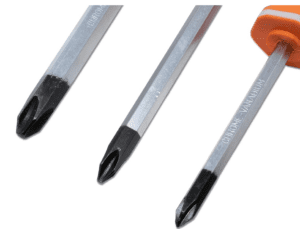
A JIS screwdriver is a type of screwdriver that is designed to fit screws that conform to the Japanese Industrial Standard (JIS). JIS screws are similar to Phillips screws, but they have a slightly different design. The main difference is that the JIS screw has a sharper point and a narrower tip than the Phillips screw. This difference means that a JIS screwdriver will fit more snugly into a JIS screw, which can help to prevent stripping and cam-out.
JIS screwdrivers are commonly used in Japanese-made products, such as electronics, cars, and bicycles. They are also becoming more common in other parts of the world, as manufacturers look for ways to improve the quality and reliability of their products.
JIS screwdrivers are available in various sizes and styles, so you can find one that is right for the job. They are also relatively inexpensive, so there is no reason not to have a few JIS screwdrivers in your toolbox.
- Clutch Screwdriver: Features a bow-tie-shaped tip for specific industrial applications.
- Tri-Wing Screwdriver: Used for consumer electronics with tamper-proof screws.
- Jeweler’s Screwdriver: For tiny screws in watches or eyeglasses.
- Computer Screwdriver: Specifically designed for computer and other delicate electronic repairs.
How to Choose the Right Screwdriver
Choosing the right screwdriver involves considering the task at hand and the type of screws involved. Here are some tips to guide your selection:
- Match the Tip to the Screw Head: Using the wrong type can damage both the screw and the tool.
- Consider the Task: For precision work, choose a precision screwdriver. For general use, a multi-bit or ratcheting screwdriver might be more practical.
- Evaluate the Grip and Handle: Comfort and non-slip grips can reduce hand fatigue and improve safety.
- Assess the Shank Length and Material: A longer shank can reach deeper screws, while a sturdy material like chrome vanadium provides durability.
| Screwdriver Type | Description of Use |
|---|---|
| Flathead | Ideal for general use across many applications where a single-slot screw is involved, including woodworking, electrical installations, and minor repairs. |
| Phillips | Suited for tasks requiring more torque, commonly used in assembling furniture and electronic devices due to its cross-shaped tip. |
| Torx | Designed for high torque application without slippage, making it perfect for automotive repairs, electronics, and appliances. |
| Hex (Allen) | Essential for furniture assembly, bicycle maintenance, and machinery repairs where hexagonal screws are present. |
| Robertson (Square) | Offers high torque capability without cam-out, widely used in woodworking and construction within Canada. |
| Offset | The Z-shaped design allows for working in tight spaces, ideal for appliance repair and cabinet installation. |
| Ratcheting | Increases efficiency in repetitive screwing tasks, reducing wrist fatigue. Useful for large assembly projects. |
| Precision | Designed for small, delicate tasks such as repairing eyeglasses, watches, and electronics with tiny screws. |
| Multi-Bit | Offers versatility with interchangeable tips for different screw types, saving space and adapting to various tasks. |
| Electric | Provides speed and power for projects with extensive screwing needs, such as constructing decks or assembling large furniture. |
| Pozidriv | Similar to Phillips but offers reduced slippage, ideal for applications where higher torque is required without damaging the screw. |
| Spanner (Snake-Eye) | Used for tamper-resistant screws in public facilities or on devices where unauthorized access is discouraged. |
| JIS | Specifically designed for Japanese electronics, preventing cam-out and damage to the screw head or tool. |
| Clutch | Suitable for specific industrial applications, featuring a bow-tie-shaped tip that engages with clutch-head screws. |
| Tri-Wing | Used for consumer electronics that require tamper-proof screws, ensuring secure assembly. |
| Jeweler’s | Essential for working with tiny screws in jewelry or watchmaking, allowing for precise manipulation. |
| Computer | Designed for safe use on sensitive electronic components, preventing static damage and ensuring precision. |
Conclusion
The humble screwdriver is a staple in any toolbox, but its variety and specialization can be daunting. By understanding each type’s specific features, benefits, and drawbacks, you can make informed choices that streamline your work and prevent damage to your tools and projects.
Whether you’re a professional tradesperson or a home DIY enthusiast, the right screwdriver is ready to tackle your next challenge. We encourage you to share this guide, comment with your experiences, or subscribe for more practical insights into tools and techniques.
In the world of screwdrivers, knowledge is power—armed with this guide, you’re ready to turn the screws on your next project with confidence and precision.


























